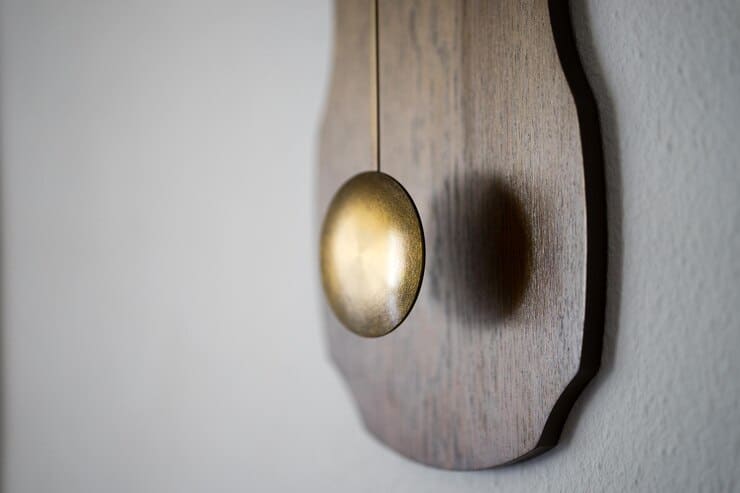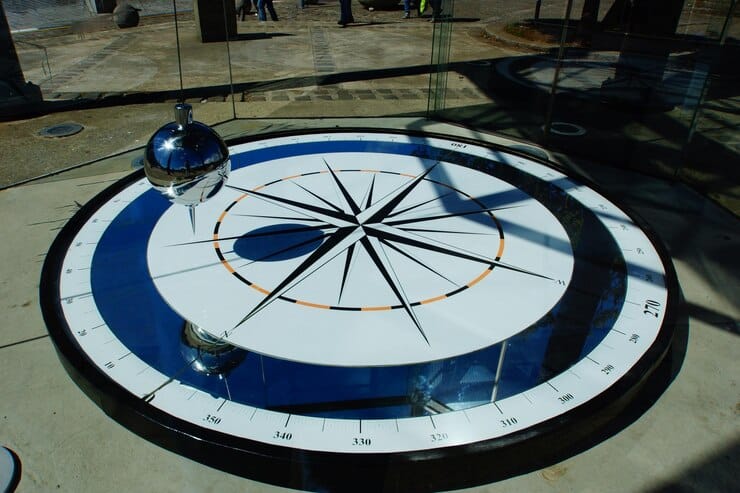
The simple pendulum is an ancient device that has been used for centuries in a variety of ways.
From its earliest uses in ancient rituals to its modern applications in scientific research and energy production, the pendulum has had a tremendous impact on human history.
In this article, we’ll explore the history of pendulums, from their earliest ancient uses to their modern applications.
Early History
Historically pendulums have been used since ancient times. In ancient cultures, pendulums were used as part of religious rituals and as a way to divine the future. In the Middle Ages, pendulums were used to tell time, and by the 16th century, the pendulum clock had been invented. This invention was a major breakthrough in clockmaking, and it allowed for more accurate timekeeping than ever before.
The pendulum clock was a major advancement in technology, and it had a profound impact on the way people lived. With the invention of the pendulum clock, people could keep track of time more accurately than ever before. This allowed them to plan their days more efficiently and gave them a better understanding of the passage of time.
Origins and Early Uses
The roots of the pendulum’s story weave through the tapestry of ancient civilisations, where the natural phenomenon of pendulum motion was first noticed and ingeniously utilised.
This initial observation, a simple back-and-forth motion that seemed to resonate with the rhythm of the universe, sparked a curiosity that would eventually lead to significant technological advancements.
In ancient China, the principles of simple pendulum motion were applied in the creation of intricate timekeeping devices. These early inventions showcased the Chinese mastery of mechanics and their deep understanding of rhythmic motion, laying the groundwork for the future development of more sophisticated timekeeping instruments.
Similarly, the Greeks, renowned for their contributions to science and philosophy, also explored the potential of pendulum-like mechanisms. Their forays into astronomy and the measurement of time incorporated devices that, while not pendulum clocks in the strict sense, shared a fundamental reliance on the regularity of swinging motion.
These devices were crucial in their attempts to unravel the mysteries of the cosmos and to organise their understanding of time and seasons.
It was this early exploration and application of pendulum motion that set the stage for one of the most significant horological advancements: the development of the first pendulum clock.
In the hands of skilled inventors and scientists, the pendulum transformed from a mere curiosity of nature into a cornerstone of precise timekeeping. This transition marked a pivotal moment in the history of technology, as the accuracy and reliability of time measurement took a monumental leap forward with the introduction of pendulum clocks.
These early uses of pendulum principles in different cultures not only highlight the universal human quest to measure and understand time but also underscore the pendulum’s role as a fundamental bridge between natural phenomena and technological innovation.
The journey from observing the simple, rhythmic swing of a pendulum to harnessing this motion in the creation of the first pendulum clock is a testament to the ingenuity and inventiveness of our ancestors.
Galileo’s Contributions
In the 17th century, the Italian polymath Galileo Galilei turned his keen intellect and inquisitive eye towards the mysteries of pendulum motion, setting the stage for a series of groundbreaking discoveries that would forever alter our understanding of physics.
Galileo’s fascination with this motion led him to conduct a series of meticulous experiments fundamentally centred around the simple pendulum.
A simple pendulum, essentially a weight suspended from a fixed point so that it swings freely back and forth, became the cornerstone of Galileo’s investigations.
He observed that irrespective of the amplitude of the swing – that is, the distance from the central resting position – the pendulum’s period of swing remained remarkably constant. This phenomenon, known as isochronism, suggested that the time taken for one complete swing was independent of the arc’s size, a revolutionary concept at the time.
Galileo’s exploration of the simple pendulum also paved the way for understanding more complex systems, like the compound pendulum, which involves a rigid body swinging about a horizontal axis.
His insights into the behaviour of pendulums under various conditions were critical in the evolution of physics, particularly in the study of dynamics and harmonic motion.
One of Galileo’s most significant contributions was his method of time measurement using the pendulum.
Before his time, measuring small intervals of time accurately was a significant challenge. Galileo’s use of the pendulum in his experiments introduced a new level of precision in time measurement, which was instrumental in advancing experimental science.
In summary, Galileo’s contributions to our understanding of pendulum motion were monumental. His work not only demystified the principles of the simple pendulum but also set the stage for future scientific discoveries, significantly impacting the course of physics and altering our perception of time and motion.
His legacy in the realm of scientific experimentation and discovery remains unparalleled, serving as a testament to the power of observation, experimentation, and analytical thinking.
The Pendulum Clock
The pendulum clock was designed in 1656 by the Dutch scientist Christiaan Huygens and marked a watershed moment in the annals of horology. This innovation harnessed the regularity and precision of the pendulum’s swing, bringing about a revolutionary change in timekeeping accuracy.
Prior to Huygens’ invention, the measurement of time was fraught with inaccuracy, but the pendulum clock introduced a new era of precision.
At the heart of this horological masterpiece was the pendulum’s swing, a simple yet mystically nuanced function that transformed the art of clockmaking.
The rhythmic oscillation of the pendulum provided a reliable and consistent measure of time. The introduction of the ‘seconds pendulum’, a pendulum with a same length that allowed it to swing back and forth in exactly one second, was particularly significant. The seconds pendulum is pretty famous. This standardisation of time measurement was critical for scientific experiments and navigation, as well as for the general structuring of daily life.
Huygens’ application of the pendulum in clockmaking was not only a technical achievement but also a conceptual leap. He realised that the key to enhancing the accuracy of clocks was to control their oscillations with a mechanism that was less susceptible to external disturbances.
The pendulum’s swing, governed by the immutable laws of physics, offered just that. By synchronising the gears of the clock with the regular motion of the pendulum, Huygens succeeded in creating a timekeeping device that was far more accurate than any of its predecessors.
The mystique of the pendulum clock lay not only in its precision but also in its nuanced function. The simplicity of its operation, coupled with the complexity of the problems it solved, imbued it with a certain elegance and charm. It stood as a testament to the ingenious application of scientific principles to solve practical challenges.
In summary, the creation of the pendulum clock by Christiaan Huygens was a monumental achievement that redefined timekeeping.
By utilising the pendulum’s swing, Huygens was able to craft a clock of unparalleled accuracy, thereby significantly impacting the way time was measured and perceived.
The pendulum clock, with its mystical and nuanced function, remains an iconic symbol in the history of technology and timekeeping.

Pendulum’s Use in Spiritual Practices in Ancient Times
The pendulum, while widely recognized for its scientific and timekeeping applications, also holds a rich history within the realm of spiritual practices, particularly in ancient times. This simple device, often a weight suspended on a string or chain, was not just a tool for measuring time or demonstrating physical laws but also a medium for divination and spiritual inquiry.
In various ancient cultures, the pendulum was believed to serve as a conduit among the physical and spiritual worlds. Its gentle, rhythmic swinging was thought to be influenced by unseen forces, providing insights and answers from the divine or the supernatural. This practice, known as pendulum dowsing, involved interpreting the direction, speed, and pattern of the pendulum’s swing to gain guidance, uncover hidden truths, or make decisions.
The Egyptians, for instance, were known to use pendulums in their religious rites and ceremonies. They believed that the pendulum’s motion could reveal divine messages or help in communication with the gods. Similarly, in ancient China, pendulums were used for geomancy. This was a process of divination that decodes markings on the ground or the patterns created by tossed handfuls of rocks, soil, or sand. The pendulum was employed to ascertain the flow of chi (life energy) and to make decisions regarding burial sites, temple locations, and other important spatial arrangements in accordance with Feng Shui principles.
In Europe, during the Renaissance and the Middle Ages, the pendulum was employed in various spiritual and mystical practices. It was often used in the search for water, minerals, and other natural resources, a practice that continued into modern times. This form of dowsing was sometimes conflated with spiritual rituals, blurring the lines between science and the mystical.
The use of the pendulum in spiritual practices was not limited to divination. It was also seen as a tool for personal enlightenment and inner journeying.
Some ancient traditions used the pendulum to enter meditative states, believing that its motion could harmonize the mind and body with the rhythms of nature.
Despite the lack of scientific backing for these practices, the cultural and historical significance of the pendulum in spiritual contexts is undeniable.
The allure of the pendulum in ancient spiritual practices speaks to the human fascination with the unknown and the mystical. It highlights our ancestral desire to connect with something greater than ourselves, whether through the mysteries of the physical world or the realms beyond our understanding.
In summary, the pendulum’s role in ancient spiritual practices was multifaceted and profound. It served as a bridge between the tangible and the ethereal, offering a tangible means for ancient peoples to explore the mysteries of the universe, seek guidance from higher powers, and connect with the spiritual aspects of their existence.
This rich spiritual history of the pendulum adds another layer to its significance in human history, transcending its scientific and practical applications.
Scientific Advancements and Theoretical Developments
The study of the pendulum has been instrumental in driving significant scientific advancements and theoretical developments.
As a simple yet powerful tool, it has enabled profound insights into the fundamental principles of physics, particularly in the realms of dynamics and kinematics.
The pendulum’s straightforward design belies its capability to unlock complex theories and principles, making it a cornerstone in the evolution of scientific thought.
Through its use, scientists have been able to test hypotheses, validate theoretical models, and develop new understandings that have shaped our view of the physical world.
The pendulum’s role in scientific exploration extends beyond gravity and motion, influencing disciplines such as engineering, astronomy, and even quantum mechanics, demonstrating its versatility and enduring importance in the scientific community.
Pendulum and Gravity
The pendulum, in its simple elegance, emerged as a pivotal instrument in the scientific exploration of gravity.
The relationship between pendulum motion and gravitational forces became a central theme in the advancement of physics, particularly in the context of Isaac Newton’s groundbreaking laws of motion.
The study of pendulum motion provided valuable insights into the nature of gravitational forces.
Early experiments demonstrated that the time taken for a pendulum to complete a single oscillation (it’s period) was influenced by the strength of gravity. This relationship was profound in its implications, suggesting a direct, quantifiable link between the motion of an object and an invisible force acting upon it.
Newton’s laws of motion, which laid the foundation for classical mechanics, found a practical and observable companion in the pendulum.
The second law, which states that force equals mass times acceleration (F=ma), could be examined and validated through pendulum experiments.
By observing the acceleration of a pendulum bob – its change in speed as it swung – scientists could calculate the forces at play, including the gravitational pull.
Furthermore, pendulum experiments helped in refining the understanding of kinematics – the study of motion without considering its causes.
The predictable and repetitive nature of the pendulum’s swing made it an ideal subject for studying velocity, acceleration, and displacement, which are key concepts in kinematics.
In addition to validating Newton’s laws, pendulum studies also contributed to the development of the theory of gravity.
The uniformity of pendulum motion across different geographical locations provided early evidence for the universality of gravity. These experiments hinted at the existence of a consistent gravitational force acting on objects regardless of where they were on the Earth’s surface, a concept that would later be fully realised in Newton’s law of universal gravitation.
The pendulum’s role in the study of gravity was not just limited to theoretical developments. It also had practical applications, such as in the determination of the Earth’s shape and the variation of gravitational acceleration with latitude.
The pendulum’s sensitivity to gravitational variations allowed scientists to make more accurate measurements of the Earth’s gravitational field, leading to a better understanding of its shape and composition.
In conclusion, the pendulum’s contribution to the understanding of gravity was multifaceted. It served as a practical tool for testing and illustrating fundamental principles of physics, played an important role in the development of theories of motion and gravity, and helped bridge the gap between theoretical physics and observable phenomena.
The pendulum’s influence in the realm of scientific advancements and theoretical developments, particularly in the context of gravity, remains a testament to its enduring relevance in the history of science.

The Foucault Pendulum
The Foucault Pendulum, introduced by Léon Foucault in 1851, stands as a landmark experiment in the annals of physics, providing tangible, visual evidence of the Earth’s rotation.
This ingenious setup transcended the realm of theoretical physics, bringing a complex astronomical concept into the domain of observable reality.
At its core, the Foucault Pendulum is a type of harmonic oscillator. It’s a physical system that, when displaced from its equilibrium position, has a restoring force proportional to the displacement.
In this case, the pendulum swings back and forth in a fixed plane while the Earth rotates beneath it. As the pendulum swings, its path appears to rotate over the course of a day, providing viewers with a direct and intuitive demonstration of the Earth’s rotation.
The beauty of the Foucault Pendulum lies in its simplicity and the elegance of its underlying principles.
As a harmonic oscillator, it exhibits periodic motion, oscillating back and forth in a manner that is predictable and quantifiable.
The kinetic energy of the pendulum is constantly converted back and forth into potential energy, with the total energy of the system remaining constant, assuming no external forces like air resistance.
This interplay of kinetic and potential energy in the Foucault Pendulum is a classic illustration of the principles governing harmonic oscillators.
The pendulum’s motion is governed by the same fundamental laws that describe other harmonic oscillators, whether they be springs, waves, or even quantum mechanical systems.
The Foucault Pendulum thus not only provided proof of the Earth’s rotation but also served as a vivid demonstration of fundamental concepts in physics.
The Foucault Pendulum’s impact extended beyond the scientific community; it captured the public imagination and played a significant role in scientific communication.
For the first time, a complex astronomical phenomenon – the rotation of the Earth – could be witnessed in real-time in a public space, such as a museum or university foyer. This experiment bridged the gap between the abstract theories of physics and the tangible experiences of everyday observers, making a profound concept both accessible and comprehensible to a broad audience.
In conclusion, the Foucault Pendulum stands as a testament to the ingenuity of scientific experimentation and the power of visual demonstration.
As a harmonic oscillator, it elegantly encapsulates fundamental principles of physics, from the conservation of kinetic and potential energy to the broader concepts of motion and force.
Its ability to visually demonstrate the Earth’s rotation made it a pivotal moment in scientific history, enhancing public understanding of our planet and its place in the cosmos.
Modern Applications
In the contemporary world, pendulums find diverse applications beyond traditional timekeeping, including in scientific instruments for teaching physics, in stabilising systems for engineering structures, and as artistic installations in public spaces.
These modern uses showcase the pendulum’s enduring relevance and versatility, adapting its fundamental principles to innovative and varied contexts.
Let’s dig deeper.
In Clocks and Timekeeping
In the realm of modern timekeeping, the role of the pendulum, while transformed by technological progress, endures in specific contexts where its traditional aesthetic and mechanical simplicity are still valued.
Despite the advent of more advanced technologies in precision timekeeping, pendulum clocks retain a certain charm and historical significance that makes them desirable for specific applications.
Pendulum clocks, once the epitome of accuracy in timekeeping, have largely given way to electronic and atomic clocks in terms of precision.
These modern timekeepers utilise vibrations in atoms or quartz crystals to keep time with exceptional accuracy. Do note that quartz crystals require special care.
However, the pendulum clock continues to be celebrated for its classic design and the elegance of its mechanical operation.
In settings such as historic buildings, traditional homes, and museums, pendulum clocks are often preferred for their aesthetic appeal and the sense of nostalgia they evoke.
Furthermore, the educational value of pendulum clocks remains significant. They are used in academic settings to teach fundamental principles of mechanics and timekeeping.
The visible and tangible nature of a pendulum clock’s operation makes it an excellent tool for demonstrating concepts such as harmonic motion, gravitational influence on time measurement, and the conversion of potential energy to kinetic energy.
In addition to their educational and aesthetic roles, pendulum clocks also find a niche in the world of collectables and craftsmanship.
Horologists and enthusiasts of clock-making artistry often cherish these timepieces for their intricate mechanical designs and the craftsmanship involved in their creation.
The making of pendulum clocks is considered an art form, preserving traditional techniques and skills that have been passed down through generations.
Moreover, there is a continued interest in the innovation and refinement of pendulum clocks.
Some contemporary clockmakers and engineers experiment with new designs and materials, seeking to enhance the performance and visual appeal of these time-honoured devices. This includes attempts to minimise the effects of environmental factors such as temperature and air pressure, which can influence the accuracy of a pendulum clock.
In summary, while the pendulum’s role in the cutting edge of precision timekeeping has been overtaken by modern electronic and atomic clocks, its presence in the realms of aesthetics, education, craftsmanship, and innovation is unwavering.
The pendulum clock continues to be a symbol of the intricate relationship between art, science, and time, holding a special place in various modern settings where its unique qualities are appreciated and celebrated.

Scientific and Educational Uses
In the realms of science and education, pendulums continue to play an invaluable role, owing to their inherent predictability and simplicity.
These characteristics make them ideal tools for demonstrating and exploring fundamental physical principles, such as gravitational acceleration and harmonic motion.
One of the key aspects often studied using pendulums is the concept of the pendulum’s period – the time it takes for the pendulum to complete one full oscillation. This period is particularly significant in educational settings because it provides a tangible way to understand and apply the principles of harmonic motion.
Students can observe firsthand how factors like the size of the pendulum and the acceleration due to gravity affect the pendulum’s period, thereby gaining a deeper comprehension of these fundamental concepts in physics.
In more advanced scientific studies, pendulums are used to explore the dynamics of rotational motion around a horizontal axis.
The movement of a pendulum about a horizontal axis offers a practical example of rotational kinematics and dynamics, allowing students and researchers to examine concepts such as moment of inertia and angular momentum.
By manipulating variables like the mass distribution and the same length of the pendulum, learners can observe the effects on the pendulum’s period and motion, thus enhancing their understanding of these complex topics.
Moreover, the study of the pendulum’s period in relation to its same length and the gravitational force is an excellent demonstration of simple harmonic motion – a foundational concept in physics.
This simple yet profound experiment allows students to see the elegant symmetry and predictability inherent in physical laws, fostering an appreciation for the beauty of science.
In addition to these core principles, pendulums are also used to teach about energy transformation.
As a pendulum swings, its energy continuously converts between kinetic energy (when the pendulum is moving fastest at the bottom of its swing) and potential energy (at the highest points of its swing).
This visual and dynamic representation of energy conservation and transformation is a powerful educational tool, helping students grasp these abstract concepts more concretely.
Furthermore, the simplicity of pendulum experiments makes them easily replicable in classroom settings, requiring minimal equipment while still offering rich learning experiences.
This accessibility ensures that pendulums remain a mainstay in educational environments, from primary schools to universities.
In summary, the use of pendulums in scientific and educational contexts is wide-ranging and significant. Their ability to demonstrate fundamental principles such as the pendulum’s period, harmonic motion, and energy transformation, along with more complex ideas like motion around a horizontal axis, makes them invaluable in fostering a deeper understanding of physics.
This enduring relevance highlights the pendulum’s status as not just a historical artefact but as a continuing contributor to the advancement of scientific knowledge and education.
Engineering and Seismology
In the fields of engineering and seismology, the principles of pendulums combine practicality and scientific insight, playing a crucial role in both seismic monitoring and structural design.
The fundamental properties of pendulums are ingeniously applied to address some of the most challenging aspects of these disciplines, especially in the areas of earthquake engineering and the construction of high-rise buildings.
In seismic monitoring, pendulums are employed as sensitive instruments that can detect and measure the Earth’s movements, including the subtle vibrations caused by seismic waves.
By utilising the pendulum’s inherent properties – its predictable period and response to external forces – scientists and engineers can accurately gauge the intensity and characteristics of seismic events.
This information is vital for assessing earthquake risks, improving building codes, and developing early warning systems. All this can help save lives and reduce property damage.
Moreover, in the realm of structural engineering, particularly in the creation of skyscrapers and tall buildings, the principles of pendulums are ingeniously adapted to enhance stability and safety.
These structures often incorporate sophisticated pendulum-like mechanisms, known as tuned mass dampers, which are designed to counteract the effects of wind and seismic forces.
During an earthquake, these dampers act like a giant pendulum, swinging in opposition to the building’s movement to reduce swaying and absorb seismic energy.
This application of pendulum principles helps to protect the integrity of the structure and ensure the safety of its occupants.
Furthermore, pendulums combine their simple mechanics with advanced technology in these engineering solutions.
For example, the same length and mass of the pendulum in a tuned mass damper are carefully calculated to match the building’s natural frequency, ensuring maximum efficiency in stabilising the structure.
This sophisticated application illustrates how the timeless principles of pendulums are integrated with modern engineering techniques to address complex challenges.
Additionally, pendulums are also used to measure gravity in geophysical surveys.
By analysing the period of a pendulum’s swing, scientists can determine variations in gravitational pull at different locations, which can provide valuable information about the Earth’s subsurface structures. This application is crucial in fields such as mineral exploration, geology, and environmental engineering.
In summary, in engineering and seismology, the application of pendulum principles is multifaceted and impactful.
Whether it is in seismic monitoring, where pendulums measure the Earth’s tremors, or in the design of towering structures, where pendulums combine elegance and utility to ensure stability, the role of the pendulum is indispensable.
Its continued use in these advanced applications underscores the enduring relevance and versatility of pendulum principles in solving modern-day engineering challenges.
The Pendulum in Culture and Art
The pendulum transcends its scientific origins to hold a profound place in culture and art, where it often symbolises the inexorable passage of time, the inevitability of change, and the rhythmic cadence of life.
This simple device has captured the imagination of artists, writers, and filmmakers, becoming a potent metaphor in a multitude of creative and philosophical contexts.
In literature, the pendulum often appears as a symbol of the relentless march of time and the cycles of human experience. It can represent the precision and inevitability of fate, serving as a reminder of the constant, sometimes oppressive, tick of the clock that measures our mortal lives.
The pendulum’s steady, predictable motion contrasts with the chaotic, unpredictable nature of human existence, providing writers with a powerful tool for exploring themes of destiny, mortality, and the passage of time.
Artists, too, have been fascinated by the pendulum, incorporating its imagery and concepts into their work.
In visual arts, the compound pendulum can be used to create dynamic, kinetic sculptures that capture both the physical beauty of motion and the deeper philosophical implications of time and change.
These artworks often invite reflection on the transient nature of existence and the ever-changing world around us.
The pendulum has also made its mark in the world of film and theatre, where it can be used both literally and metaphorically to create tension, signify the passage of time, or illustrate a character’s internal struggle.
In some films, the pendulum’s motion can be a dramatic device, heightening suspense or symbolising the inexorable approach of a crucial event or decision.
Moreover, the pendulum has a place in the realm of philosophy, where it serves as a metaphor for various dualities and cyclical theories of life.
Philosophers have used the pendulum to illustrate concepts such as balance, rhythm, and the oscillation between extremes. It can even represent the ebb and flow of fortunes, the swing between different states of being, the perpetual dance between opposites such as good and evil, or chaos and order.
The pendulum’s influence also extends to popular culture, where it appears in various forms, from the ticking of a clock in a suspenseful story to a visual motif in music videos and graphic design.
Its enduring presence in these mediums attests to its universal appeal and its ability to convey deep, resonant themes in an accessible and often visually striking manner.

Modern Use of Pendulum in Spiritual Practices
In the contemporary spiritual landscape, the pendulum maintains a distinctive place, seamlessly integrating ancient wisdom with modern metaphysical practices.
Its use, transcending mere historical curiosity, is deeply rooted in various forms of spiritual and intuitive exploration, resonating with those seeking a tangible connection to their inner wisdom or the broader universe.
In modern spiritual practices, the pendulum is commonly used for dowsing, a form of divination employed to gain insight or locate objects or energies.
Practitioners, often holding the pendulum by a chain or string, pose questions and interpret the pendulum’s movements — swinging, circling, or oscillating — as responses or indications.
This method is believed by many to tap into the user’s subconscious mind or connect with spiritual guides, offering answers that might not be readily accessible through conventional means.
Pendulum dowsing is not limited to personal introspection or spiritual guidance; it is also employed in energy healing practices like Reiki or chakra balancing.
Here, the pendulum’s motion is used to assess the energy flow or alignment in a person’s body, with the belief that any imbalances or blockages can be identified and addressed.
The pendulum’s reactions are interpreted as indicators of the energetic health of different areas or centres in the body.
Moreover, the modern pendulum practice often incorporates elements from various cultural and spiritual traditions, blending them into a holistic approach that appeals to a diverse range of individuals.
Crystals, gemstones, and other materials believed to have specific energetic properties are frequently used in pendulum construction, adding layers of meaning and personal significance. The radiance of selenite crystals is undeniable when combined with the power of pendulums.
In addition to its divinatory uses, the pendulum finds its place in modern meditation practices. Some individuals use the rhythmic motion of the pendulum as a focus point for meditation, finding that its steady, predictable swings aid in achieving deeper states of relaxation and mental clarity.
This practice often serves as a tool for grounding and centring, helping practitioners to calm their minds and connect more profoundly with the present moment.
Furthermore, the pendulum’s role in spiritual practices has expanded into the realm of self-discovery and personal development. It is sometimes used as a means of exploring the subconscious mind, uncovering hidden beliefs or emotions, and facilitating personal growth and self-awareness.
This introspective use underscores the pendulum’s capacity to act as a bridge between the conscious and unconscious realms.
Challenges and Limitations
In the current era, marked by rapid advancements in digital and quantum technologies, the practical applications of the pendulum face significant challenges and limitations.
Although the pendulum has been a cornerstone in the development of timekeeping and scientific measurement, its efficacy and precision are increasingly overshadowed by more advanced technological innovations.
One of the primary limitations of the pendulum lies in its accuracy, especially when pitted against the extraordinary precision of modern timekeeping devices.
Atomic and digital clocks, which utilise the consistent vibrations of atoms or the stable oscillations of quartz crystals, have far surpassed the pendulum in terms of accuracy.
These advanced clocks can measure time with such precision that they are used to define the standard units of time itself, something beyond the reach of traditional pendulum-based systems.
Additionally, the pendulum is notably susceptible to external factors that can affect its performance.
Air resistance, for instance, plays a significant role in damping the pendulum’s motion, gradually slowing it down and affecting its accuracy as a timekeeper.
This factor alone makes the pendulum less reliable compared to electronic devices, which are largely impervious to such environmental influences.
Temperature changes present another challenge for the pendulum. Variations in temperature can cause the materials in a pendulum clock, especially the rod or string from which the weight is suspended, to expand or contract. This alters the length of the pendulum, thereby changing its period of swing and, consequently, the accuracy of the time it measures.
In contrast, modern clocks and measuring devices often incorporate materials and designs that minimise the impact of temperature fluctuations.
Moreover, the pendulum’s mechanical nature means it needs regular maintenance as well as calibration to ensure its accuracy.
This need for upkeep is a significant drawback in an age where many prefer the convenience and reliability of maintenance-free digital devices.
In the realm of scientific measurement, while pendulums offer valuable educational insights, they are limited in their application for high-precision experiments, especially in fields that demand atomic or subatomic-level accuracy.
The advent of quantum technologies, which exploit the properties of quantum mechanics for measurement and information processing, has set new standards of precision that are beyond the scope of pendulum-based methods.

Conclusion
The history of pendulums is a long and fascinating one. From their earliest uses in ancient rituals to their modern applications in scientific research and energy production, pendulums have had a tremendous impact on human history.
Pendulums are still used today for a variety of purposes, including spiritual and metaphysical practices, scientific research, and energy production.
Whether you are interested in pendulums, how to use a pendulum, or what pendulums are used for, the history and applications of pendulums are sure to fascinate you.

